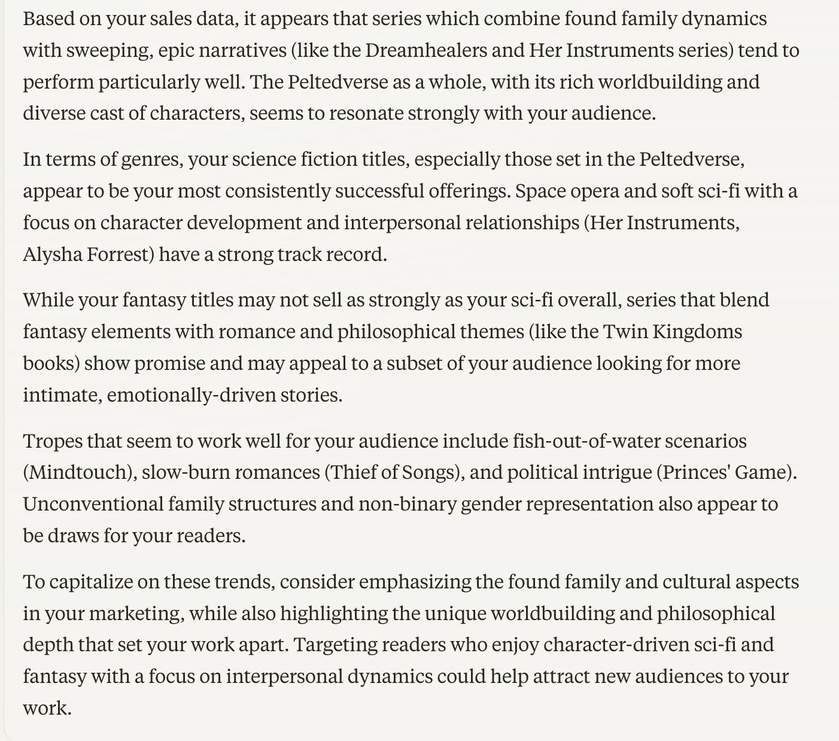Anne R. Allen’s Blog… with Ruth Harris:
THE OFFER
I’m writing this guest post from behind two boxes of books just delivered from the publisher. When I pried one open, the cover of the novel I’ve labored over for so long was revealed, and I laughed out loud, like a schoolgirl. I couldn’t stop. The flood of emotion was a culmination of years of writing dreams and an arduous journey, one that started on September 20th, 2021.
On that warm September morning, I was sitting at my desk with a cup of coffee and the windows open to check my email. I set my cup down and stared at the message in my inbox. (I’m sure my mouth dropped.) I had an email from the Production Editor at Unsolicited Press, the independent publisher I had sent my manuscript to over nine months earlier. In part it read:
After reviewing thousands of submissions this summer, we narrowed it down to less than 40 projects to fill out 2023 and 2024. Your book was one of them. If the book is still available, contact us at your earliest convenience to discuss the details. This offer expires in two weeks.
I nearly fell off my chair. I was so used to the industry wide no response means no, I had assumed this submission had also fallen into that black hole. Was my book still available? Does my Hemingway cat have polydactyl thumbs?
THE BEGINNING
The true beginning of this journey dates back to September of 2017. That was when I finally let go of my writing dreams for Novel #1 and #2 and started to write the first draft of Novel #3, Let Evening Come.
After the first draft was complete, I gave it a short rest. But I was eager to get back into it and printed off a bunch of pages so I could mark it up with pencil. Somehow, seeing my story on paper helps me see what I want to say. After another edit and then another — falling in love a third time with a third book — I let my daughter, the editor, read it.
With her suggestions in mind I tightened the narrative, fixed my dialogue tags, added more character interiority — I tend to hold my reader at arm’s length — and nixed some unnecessary secondary character POV. After a couple more rounds with a sister or two who consented to reading another one of “Yvonne’s missives”, I thought I was in a good place to begin querying agents.
THE QUERY
I spent a great deal of time on that letter, until I had the most perfect query letter (swallow) imaginable. I had done my research and targeted my ideal agents, widening the circle as one by one they rejected me.
The responses (when there was one) were sadly the same: Publishing is a subjective business and other agents may feel differently.
I dearly wish I’d kept some of the handwritten rejection notes I got when I started querying my first novel, a Vietnam Era love story, which has since turned historical. (Every time I pen that word, I think hysterical. Kinda like the first time I wrote a blog post about bookstores and referred to B&N as B&E) 🙂
Those rejection notes carried a hint of personality. They were mine! And as dissimilar from today’s canned rejections as my floppy discs were from the Cloud. Who wants to print out impersonal, canned rejections to hang on the wall? And here I wanted to be like Stephen King, saving and bragging about his rejections.
I wasn’t comfortable with trying to self-publish, but I wasn’t giving up. There are many small independent publishers who accept manuscripts directly from writers, and I decided to give them a try. I winnowed that list down to the five I liked best — a considerably shorter list than my ideal agent list — and queried Unsolicited Press on 12/02/20. So, nearly nine months had passed before they responded via email on September 20, 2021, the morning I nearly fell off my chair.
THE “CALL”, THE CONTRACT & EDITORIAL CALENDAR
So, long story short, whereas it used to be “The Call” writers yearned for, now it’s as likely to be “The Email.”
Production Editor Esme gave me two weeks to respond, but I didn’t need two weeks. In fact, I didn’t need two days. I reckon I sent back a breathless YES that same morning.
The next step was signing the contract, a standard industry-wide document, but Esme wisely told me to take the weekend and write down any questions I had. Of course, I had questions but nothing they couldn’t answer to my satisfaction.
I then had several months to get my final copy to them. The manuscript was 110,000 words, so I needed all of that to go over it once again. Then came the editorial calendar with copy edits dates, cover development, proofreading dates and deadlines. We fell behind that calendar but finally the galley was out — I had a galley! — and my manuscript began to take the shape of a book. Writing dreams were coming true.
The press pulled it all together to get back on track to meet the original publishing date of April 2, 2024. They sent me one printed ARC to read, and I had my last and final chance to catch any errors. I only found one! My editor, Summer, told me that was the first time that had ever happened. Of course, I still fear there’s one lurking in the margins that everyone missed.
In the meantime, they set me up with a Universal Book Link through Books2Read. It’s the platform by which shoppers can access their digital store of choice with one click. It’s a great tool for self-published authors too.
PREORDERS – THE FINAL LAP
Preorders seed excitement.
If you like an author and want that person to keep writing books, then supporting them during a book launch isn’t such a bad idea. All preorders count towards the first week of sales so they help an author get all to a good start. When you preorder a book, it tells bookstores people want this book, which typically makes them stock more copies of the book, which of course means more people see it and buy it. So, if there is a book coming out from one of your writerly friends via traditional publishing that you plan to purchase anyway, the best way to support them is to preorder.
With ten days to go, my fear that it won’t be well received looms like a thunderhead.
The self-doubt that plagues all writers (our own worst enemy) keeps me up at night. But from first draft to planning a launch party, the long slog is worth it. (You have to have a party!!) In the end, we have to trust ourselves, our publishers, and all the people working on our behalf behind the scenes.
Link to the rest at Anne R. Allen’s Blog… with Ruth Harris
PG would have passed the OP by, except for the author’s description of a “standard industry-wide” publishing contract she received from her publisher, Unsolicited Press.
THERE IS NO STANDARD INDUSTRY-WIDE PUBLISHING CONTRACT. SUCH A DOCUMENT DOES NOT EXIST.
“This is our standard contract” always causes to immediatly automatic direction for shields to be raised on the Starship PG. Adding “industry-wide” causes the reserve shields to deploy and extend long, nasty horns that shoot fire.
The term, “standard contract,” may, in fact, be true for a publisher, but it doesn’t mean that it’s a fair contract or a contract that contains no nasty surprises.
PG has examined several trillion contracts from publishers large, medium and small and he can say with certainty that no two publishers have identical publishing contracts.
PG understands that large literary agencies have copies of publishing contracts from major publishers that are already marked up. “Standard Contract” = “Standard Mark up”
PG had never heard of Unsolicited Press, so he looked it up on Amazon. Then he had Zon order the press’s books by sales rank.
This exercise resulted in Dark Roux appearing as Unsolicited Press’s top-ranked book. When PG looked, that book had a ranking of 2,016,017 in Kindle Store (it did have 18 rankings for a five-star average). He then checked the trade paperback ranking and found a sales rank of 500,377 in Books. The audiobook for Dark Roux was ranked 483,444 when PG checked today.
PG checked out several other Unsolicited Press listings on Amazon and found rankings quite similar to the Dark Roux rankings above.
He then checked on Barnes & Noble and discovered no sales rank for Dark Roux (per BN practice), but found no reader reviews for the book, which may be an indicator of something.
PG is going to stop now because he doesn’t want to pile on a new author and a very small press.
But he warns one and all to read and understand every publishing contract and every non-publishing contract before signing it.
If you want to get warmed up prior to seeing an attorney about a proposed publishing contract, The Authors Guild website has an excellent Model Trade Book Contract available online at no charge PG could discern. It’s worth your time to work your way through it. If you do so, you’ll know more about publishing contracts than all authors who haven’t read it plus any number of literary agents.
PG notes that the Authors Guild Model Contract may not provide reliable guidance for publishing contracts with publishers located outside of the U.S.
For example, British publishers are operating under British law, not generally-common principles of US contract and publishing law. British and US laws are similar because the US borrowed British legal principles way back when. However, although similarities persist in many different areas of the law, significant differences have arisen during the almost 250 years since the American Revolution commenced.





